Year: 2014
-
Adam Shankman to Collaborate With Laura L. Sullivan On a YA Project
“In Shankman and Sullivan’s reimagining, set in Hollywood’s Golden Age, Lulu is a once-poor teen from New York City who, after a lucky break, finds herself working in Los Angeles …
-
Diversity 101: Gay in YA
Contributed to CBC Diversity by Adam Silvera
When writing diverse books, we’re writing about choices—and the things we can’t choose. Harry Potter could have chosen not to go to Hogwarts, but spending the rest of his youth with the incorrigible Dursleys would’ve sucked for all involved—Harry, the Dursleys, and the readers who became readers because of the boy wizard. Katniss Everdeen didn’t have to volunteer as tribute in The Hunger Games in place of Prim, but life in District 12 was bleak enough without watching someone act like her younger sister’s name wasn’t announced for a battle to the death. There are choices characters—and people—make because the alternative is simply unspeakable. But then there are the ones who don’t have a choice at all. They don’t choose to be Latino, they don’t choose mental illness, they don’t choose their sexual orientation. Who gives them a voice? I, along with many others, volunteer as tribute.
Personal Connection
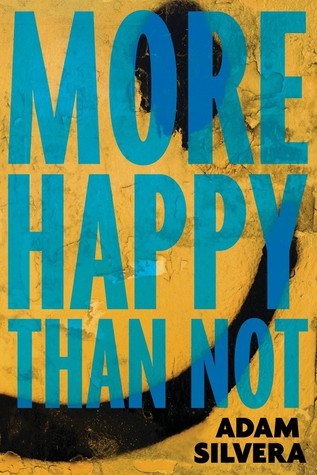
I didn’t choose to be gay, but I’m happy I am because I would’ve never chosen this for myself, especially while growing up in the South Bronx. I wanted to explore this while writing my debut novel, More Happy Than Not, about a 16-year-old boy who wants to forget he’s gay with the help of a new memory-alteration procedure that’s recently become available to the public. If given the choice at sixteen to be straight, I think I would’ve taken it. I wouldn’t have to worry about coming out and whether or not my friends would accept me—I would be “normal.” Of course I later realized I was normal back then, just wired differently from what’s recognized as “normal.” Still, the desire to be in that “normal” category was strong.
I turned to books for guidance in my teen years, but the few books I dared to check out—I won’t out which ones they are—didn’t create an experience that was reflective of mine or even seemed legit. Not every book or film or TV show can recreate your childhood or a time of your life piece by piece, but if we want empathy for our differences, I think a first step is being conscious of creating a universal experience to unite us all instead of building walls like some exclusive clubhouse. And I think the universal experience is just a good story about identity.
Stereotypes to Watch
But that’s where things get messy because discovering who we are is messy business. And if you’re not gay but want to write characters who are, don’t simply turn to current gay culture to craft your character. Common mistakes include gay guys being automatically interested in fashion and Lady Gaga, and lesbian girls competing in sports or fighting all the time. Guess what: you can be a straight guy who cares about your appearance or a straight girl who’s a ninja. The only thing that separates a straight person from a gay person is their respective attractions. That’s all. Put away the “Creating A Gayer Gay Character” checklist and whip out the “Creating A Fully Realized Character” checklist and ask yourself who the character is, not just who the character kisses.
Applause for the Below
Below is a list of novels that hit all the right chords for me: the characters aren’t token gays, their storylines move beyond their sexuality, and they’re just damn good. If you’re not already obsessed with them as I am, I hope you check them out. (Note: A number of the authors below writing about gay characters are straight. Imagine that.)
1. THE CLASSIC
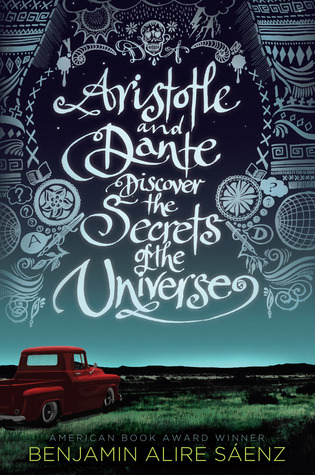 Aristotle and Dante Discover the Secrets of the Universe by Benjamin Alire Saenz.
Aristotle and Dante Discover the Secrets of the Universe by Benjamin Alire Saenz.I read this book twice within six months and it’s one of my all-time favorite novels. I related to Ari, an angry teen who deep down has an idea on who he is, but doesn’t accept himself, even when he meets the unforgettable Dante. From friendship to love, mysteries to discoveries, this book is a classic coming-of-age and coming out story.
2. TEENAGER WHO SHRUGS OFF BEING GAY
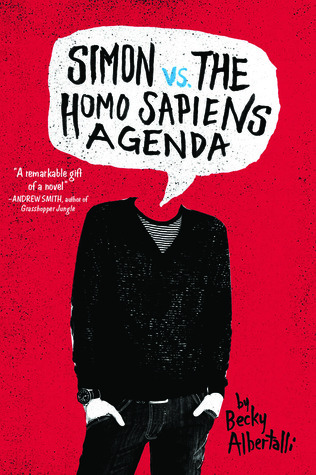 Simon vs. the Homo Sapiens Agenda by Becky Albertalli (April 7th, 2015)
Simon vs. the Homo Sapiens Agenda by Becky Albertalli (April 7th, 2015)Put this book on your radar now because this is another novel I’m pissed I didn’t have as a teen. The cliché of gay teenagers hating being gay is probably left over from more intolerant times, but Becky Albertalli flips the script. Sixteen-year-old Simon Spier is at risk of being outed by a classmate, which pisses him off because no one really likes being blackmailed, but it’s not because he’s ashamed of being gay as it is about Simon moving at his own speed. And I love how Simon believes everyone should have to come out, gay and straight. This novel tackles identity with hilarity and wisdom.
3. WINNER OF GIVING CONVENTIONS THE BIRD
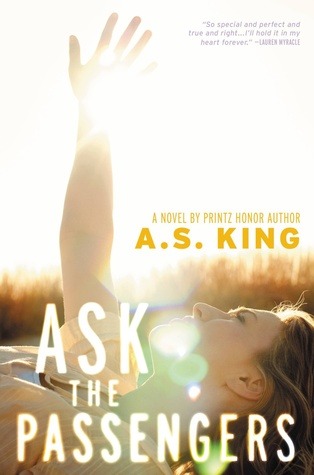 Ask the Passengers by A.S. King
Ask the Passengers by A.S. KingAstrid Jones isn’t sure what to do with all the love inside of her so she plays a game where she sends love to passengers on overhead planes. Astrid and her friends are fully drawn out by the skilled hand of A.S. King—the same hand she uses to flip off the way society tries boxing people with labels.
4. STRAIGHT BOLD
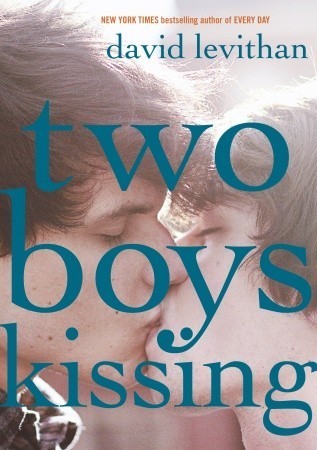 Two Boys Kissing by David Levithan
Two Boys Kissing by David Levithan So we’ve seen this cover, right? The photograph of two boys kissing? I’m ashamed to admit I took the book jacket off while reading it on the subway because I still carry around a fear I hope future generations won’t have to experience, but I applaud how brave and enlightening this Lambda-Award winning novel is. If David Levithan wants to write Two Boys Kissing 2/Two Boys (Still) Kissing/Two More Boys Kissing, whatever, I’ll be just as fearless as this novel and proudly rock the jacket next time.
5. THE BFFS WHO ARE GAY BUT AREN’T THE GAY BFFS
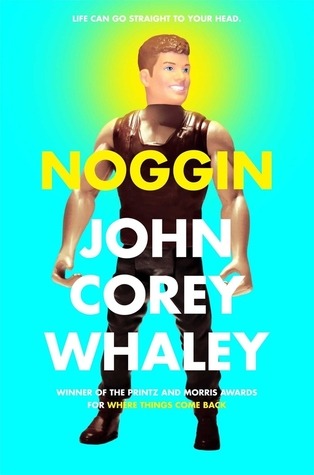
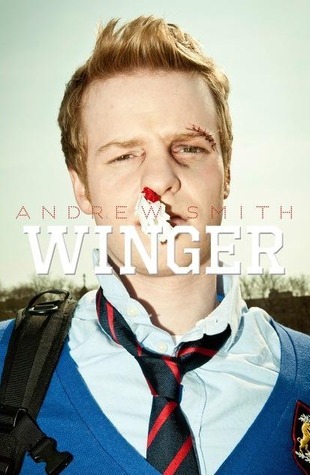 Noggin by John Corey Whaley and Winger by Andrew Smith
Noggin by John Corey Whaley and Winger by Andrew SmithKyle in Corey Whaley’s surreal Noggin and Joey in Andrew Smith’s extraordinary Winger are close friends to their respective narrators, but they are both so layered they could’ve easily had their own books. Many times secondary characters who happen to be gay are hopelessly cliché and one dimensional, but not Kyle and Joey. (Someone get to work on the Kyle/Joey buddy cop movie, please.)


Adam Silvera is the young adult author of More Happy Than Not, due out from Soho Teen on June 16th, 2015. He is tall for no reason and can be found online at adamsilverawrites.com and on twitter @adamsilvera.
-
Cassandra Clare & Holly Black On the Importance of Diversity
“One of the things I get most often in terms of letters from kids is: ‘Could you write a kid like me?’ Which incorporates the spectrum of diversity—a character of …
-
Bestselling Team of Eoin Colfer and Oliver Jeffers Sign Major Global Deal With HarperCollins
NEW YORK/LONDON – HarperCollins US and UK announced today the acquisition of IMAGINARY FRED, the first-ever picture book collaboration from the extraordinary team of Eoin Colfer and Oliver Jeffers. Scheduled …
-
New “Dark Arts” Section to Be Added to the Warner Brothers Harry Potter Studio Tour in London
“Fans will see a plethora props, costumes, and sets that served to bring Lord Voldemort and his Death Eaters to life in the Harry Potter film series. Some of the …
-
Kate DiCamillo on Reading Together and the Creative Process
Reading drafts of her work aloud is also essential to DiCamillo’s creative process: You catch all kinds of stuff that way. On the page it looks okay, but then words will bump …
-
2014 National Book Awards Longlist for Young People’s Literature is Revealed
Finalists will be announced on October 15. The National Book Awards Ceremony and Benefit Dinner will be held on November 19 in New York City, at which time the winners will …
-
ALA Committee to Focus 2014 Banned Books Week On Comics & Graphic Novels
Educators agree that graphic novels are useful for teaching new vocabulary, visual literacy, and reading skills…Eric Kallenborn, who teaches English at Alan B. Shephard High School in Palos Heights, Illinois, …
-
Attention, Creative Teens: How to Become an Exhibited Artist or Published Author
New York, NY – The annual Scholastic Art & Writing Awards, the nation’s longest- running, most prestigious scholarship and recognition initiative for students in grades 7–12, is now open for …
-
Ursula K. Le Guin Wins the 2014 Medal for Distinguished Contribution to American Letters
“Le Guin is the 27th recipient of the Medal for Distinguished Contribution to American Letters, established in 1988. Previous recipients include John Ashbery, Joan Didion, E.L. Doctorow, Maxine Hong Kingston, …
-
‘Vanity Fair’ Reveals Lost Chapter From ‘Charlie & The Chocolate Factory’
It turns out, another draft of the book contained a chapter called “The Warming-Candy Room” which features sweets that may cause an overzealous eater to erupt with heat. Vanity Fair …
-
Keith Richards & His Daughter Team Up For Picture Book Project
Richards’ daughter, Theodora Richards, created the illustrations. Theodora and Keith poured over old family photographs to draw inspiration for the artwork. Little Brown Books For Young Readers released the finished …
-
Facebook Users Name Harry Potter Series As Most Beloved Books
What were the findings? Not surprisingly, J.K. Rowling’s Harry Potter series captured the number one spot. Other children’s books that made it into the Top 20 include The Lion, the Witch, …
-
‘The Guardian’ Unveils An Unpublished Chapter From ‘Charlie & The Chocolate Factory’
The chapter, entitled “Fudge Mountain,” can be found in an early draft of Dahl’s beloved children’s book. Sir Quentin Blake, the famed artist, created new illustrations for this monumental unveiling. (The …
-
CBC Diversity: Everyone Wants to be the Hero Sometimes
Contributed to CBC Diversity by Sara Farizan
When I write a story, I often don’t think about diversity. I don’t think about how many characters I should have of a certain ethnic or cultural background, or about whether I meet a quota on how many different types of people I have on the page. I don’t think about if what I am doing is unique or perhaps not as mainstream. If I thought about all of those things, I probably wouldn’t have written the books that I have, or will hopefully, continue to write.
When I do write a story, I think about people I know in real life. I think about issues I would like to explore or think need more attention. I think about books that I wish I had as a teenager and think about the books I appreciated from that period of my life. I think about how I still have so much to learn, not just about writing, but about the world, and people that make the world complex, interesting and beautiful.
Now that I do have a platform and an audience, I worry about representation. I worry about the characters I do portray and if people in real life feel that I don’t speak for them or if I am appropriating a culture or groups of people. I think about this so much now that I find sometimes it prevents me from writing about people who are different from me.
Perhaps this is why we don’t see as many diverse characters or diverse environments in children’s literature. There is a level of fear or discomfort about writing the wrong thing. Are we allowed to write from the perspective of a different race, culture, sexual orientation, religious belief or gender? Is this a privilege a writer is afforded? Will writing a character who is not like us feel false, cheap or so rife with stereotypes that what once started out as well-intentioned becomes part of the problem?
Now the answer is of course writers can write whatever they so choose. If we only wrote characters like us, stories would feel stifling and boring. I don’t plan on writing Persian characters or queer characters forever, but that’s what has been important to me for a very long time: the idea of identity and what it means to be one’s self.
That being said, when I do write characters that aren’t like me, they are reflections of people I have gotten to know in the real world. Friends I have grown up with. Friends I have met through travel or in school. Friends I have made at various jobs and in different stages of my life. The more people I come in contact with, the more connections I make with people who are not like me, allows my life to become richer and better.
It is in these friendships and connections that people can discuss what is really on their minds and what is important to them. It allows one to listen to someone else and become more empathetic. It makes one realize that there are so many different issues, so many different identities, and yet many people have more things in common with one another than they think.
We should see color. We should see religion. We should see homosexuality. We should see gender identity. We should see all the things that make people and the world different and not pretend that we are colorblind or that one story is enough to represent a whole group of people.
But we should also remember that most people have the same kinds of feelings and wants. Everyone wants to be the hero sometimes. Everyone wants to get the love interest sometimes. Everyone feels anger, grief, joy, sadness, and these are feelings writers understand completely. The more characters that we write as human, no matter what they look like or where they are from, the more stories will resonate with readers who so want to see themselves in books. So let’s do more of that, yeah?

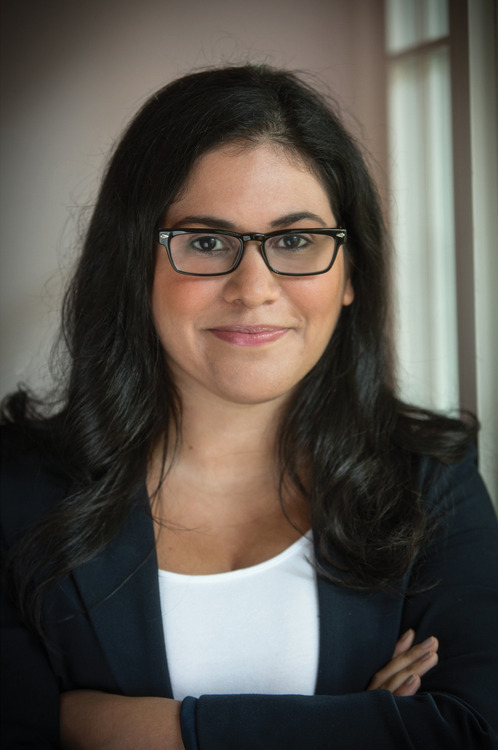
Sara Farizan is the author of If You Could Be Mine. The daughter of Iranian immigrants, Farizan lives in San Francisco, but Boston will always be her home. She is an MFA graduate of Lesley University and holds a BA in film and media studies from American University. Tell Me Again How a Crush Should Feel is her second novel.
-
20th Century Fox to Adapt ‘The Scorch Trials’ By James Dashner
“In the aftermath of The Hunger Games’ global success, many studios have turned to young adult books in the hopes of discovering the next great box office franchise, but that’s …
-
‘Tactile Picture Books Project’ Goes Beyond Braille
Illustrations from Goodnight Moon and Harold and the Purple Crayon have already been adapted into this exciting new form.The team hopes that one day the technology that makes 3-D picture …
-
Happy Birthday, Jon Scieszka!
Scieszka (rhymes with Fresca) is also the founder of Guys Read, a literacy program that encourages boys to become lifelong readers. Above all, his mission has been to connect with …
-
How Does a Die-Hard Bibliophile React to a Person Who Doesn’t Enjoy Reading?
I’ve heard those words, or similar variations (‘I haven’t read a book since high school,’ or, even more mind-blowing, ‘Reading is boring’) many times in my life, and without fail, …
-
Usher Joins Scholastic to Launch “Open a World of Possible” Initiative and Celebrate the Power & Joy of Reading
New York, NY — Scholastic, the world’s largest publisher and distributor of children’s books, today announced that Usher is joining with the company to launch a new “Open a World …





















